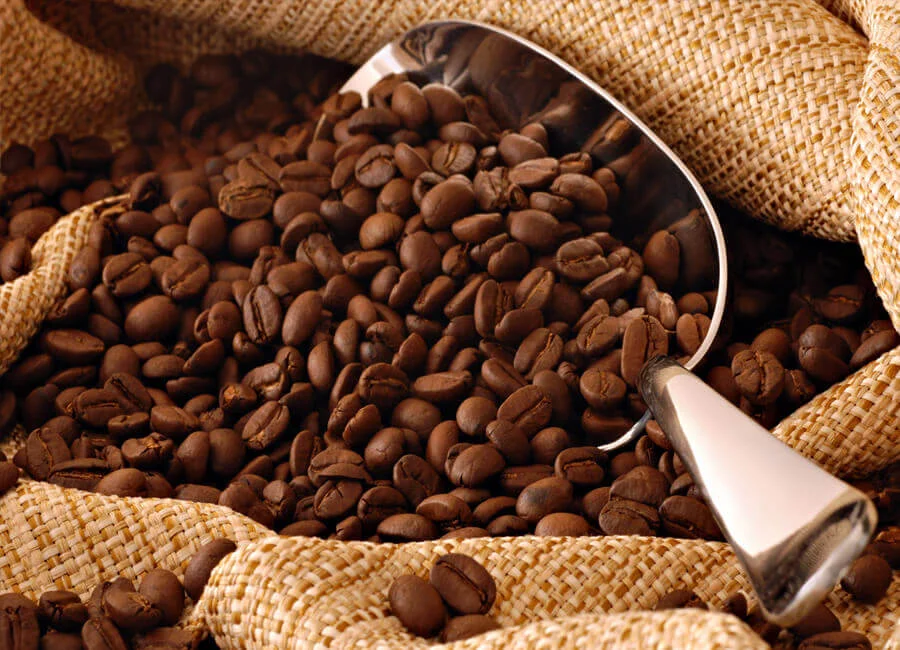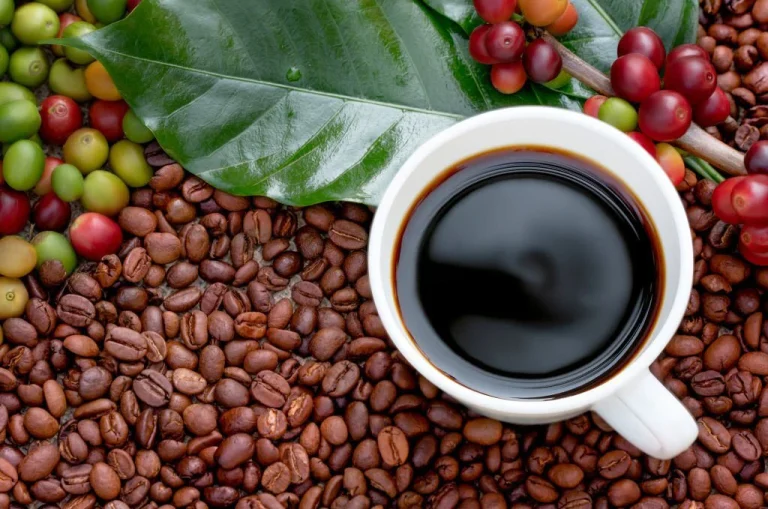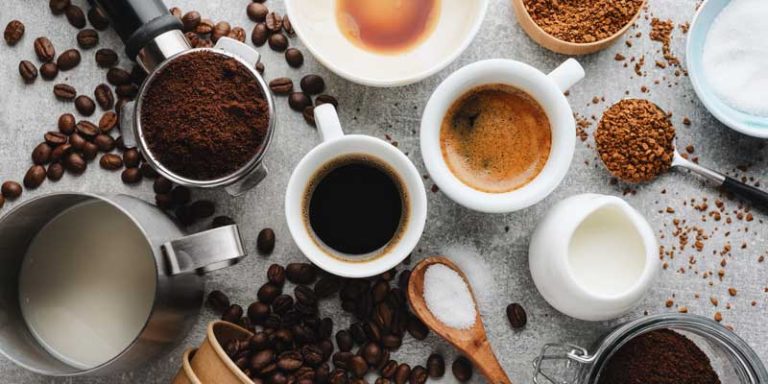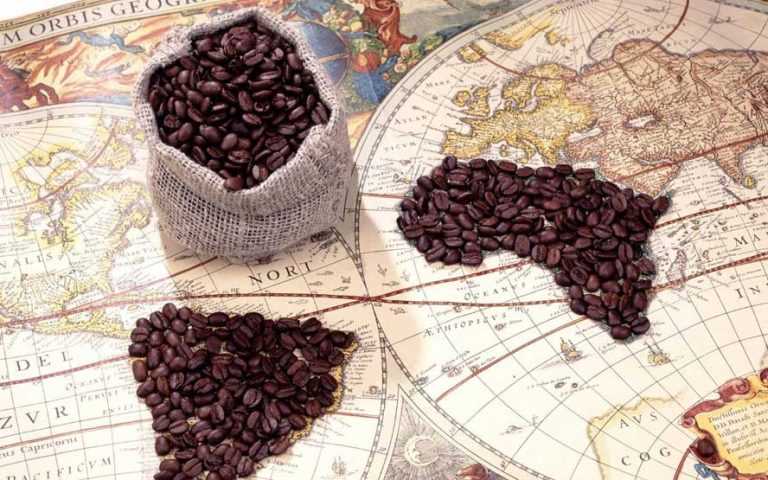Are you a coffee lover looking to deepen your understanding of your favorite beverage?
Join us on a journey through the fascinating world of coffee beans, exploring their diverse flavors, aromas, and varieties.
Learn how to taste different coffee flavors and discover the major varieties of coffee beans to choose the perfect one for your next brew.
Grab a cup of your favorite brew and let’s dive in!
Key Takeaways:
- Coffee flavors are complex and can vary by region, roasting method, and type of coffee bean.
- There are four main types of coffee beans: Columbian, Robusta, Liberica, and Excelsa, each with unique flavors and characteristics.
- When choosing coffee beans, consider the flavor profile, origin, and roast level to find the perfect cup.
Introduction
Coffee enthusiasts are constantly seeking new and exciting flavors that tantalize their taste buds, and this journey often begins with the choice of beans, such as the renowned Arabica and robust Robusta beans, known for their distinct profiles and aromas.
Arabica beans are celebrated for their complex, nuanced flavors ranging from fruity and floral to nutty and chocolaty notes, making them a favorite among those who appreciate a milder, smoother cup of coffee. On the other hand, Robusta beans offer a more robust and intense flavor profile with earthy and woody tones, often sought after by individuals who prefer a stronger, more bitter brew.
Specialty coffee connoisseurs are particularly drawn to the diverse characteristics of Arabica and Robusta beans, as these beans provide the foundation for creating unique and unforgettable coffee experiences. The interplay of these distinct bean varieties with various processing methods, roasting techniques, and brewing styles further elevates the rich tapestry of flavors that coffee lovers worldwide crave.
Understanding Coffee Flavors
Understanding coffee flavors goes beyond a simple sip; it’s an exploration of aromas, profiles, and experiences that encompass a diverse range of tastes, from floral notes in specialty coffees to the rich textures of bold roasts.
One of the key elements that define the complexity of coffee flavors is the way different beans are roasted. Light roasts often bring out fruity and acidic notes, while medium roasts have a balanced flavor profile with moderate acidity and body. On the other hand, dark roasts tend to showcase more caramelized and smoky flavors, sometimes bordering on bitterness.
Regarding tasting coffee, the process involves more than just the taste buds. The aroma of freshly ground beans, the visual appeal of the brew, and even the sound of coffee brewing can all influence the overall sensory experience.
What Are Coffee Flavors?
Coffee flavors encompass a spectrum of tastes, aromas, and textures derived from the beans’ origin, roast, and brewing methods, offering a unique tasting experience for enthusiasts seeking diverse flavor profiles.
One of the key factors influencing coffee flavor is the origin of the beans. Different regions around the world produce beans with distinct flavor profiles, influenced by the soil, climate, and altitude of the coffee plantations.
The roasting process is another critical element affecting the taste of the final brew. By adjusting the roasting time and temperature, roasters can enhance specific flavor notes, such as acidity, sweetness, or bitterness.
The brewing method plays a vital role in extracting flavors – whether it’s the slow immersion of a French press or the pressure-driven process of espresso extraction.
How Do You Taste Coffee Flavors?
Tasting coffee flavors is an art that involves exploring different types of coffee, employing various techniques, and attending tasting events or specialty cafes to refine your palate and appreciate the nuances of brewing methods.
One key aspect of tasting coffee flavors is to identify the aromatic profile of each cup. When you first encounter a freshly brewed coffee, take a moment to inhale deeply and discern the complex aromas that emanate from the cup. Complementing the olfactory experience, the process of sipping coffee involves letting the liquid coat your tongue evenly to fully capture the flavor profile. By paying attention to factors like acidity, body, and aftertaste, you can start unraveling the intricate layers of flavor encapsulated in every sip.
What Are the Different Types of Coffee Flavors?
The world of coffee flavors is diverse and multifaceted, ranging from delicate floral notes and fruity undertones in specialty coffees to the bold flavors and rich textures that define the essence of a truly exceptional brew.
Specialty coffees offer an array of unique tasting experiences, with some showcasing enchanting floral profiles reminiscent of a blooming garden, while others surprise the palate with bursts of fruity sweetness like ripe berries dancing on the tongue. The bold flavors found in certain specialty blends can be likened to a symphony of robust notes that leave a lasting impression. Texture plays an equally crucial role, whether it’s the velvety smoothness of a well-crafted latte or the indulgent richness of a strong espresso shot.
Exploring Coffee Bean Varieties
Exploring coffee bean varieties unveils a world of distinction, where the delicate Arabica reigns as the king of flavors, thriving under specific climate conditions and meticulous growing practices to deliver a sensory experience cherished by enthusiasts seeking quality and variety.
Arabica beans, known for their nuanced flavors ranging from fruity and floral to nutty and chocolatey, are predominantly cultivated at higher altitudes in regions with well-defined rainy and dry seasons.
On the other hand, Robusta beans, with their strong, bold taste and higher caffeine content, flourish in lower altitudes with more consistent temperatures and rainfall.
The environmental factors, such as soil composition, temperature variations, and elevation, play a significant role in shaping the distinctive flavor profiles of coffee beans.
Major Varieties of Coffee Beans
The major varieties of coffee beans encompass a spectrum of flavors and experiences, shaped by altitude, soil composition, nutrient levels, canopy coverage, shade, and meticulous picking that collectively contribute to the unique characteristics of each bean.
Arabica and Robusta are two primary types of coffee beans with distinct flavor profiles.
Arabica beans, typically grown at higher altitudes with rich soil and adequate nutrients, boast a smooth, complex taste often noted for its fruity and floral undertones. On the other hand, Robusta beans, cultivated at lower elevations and known for their resilience, offer a stronger, more bitter flavor favored by those seeking a bold kick in their brew.
Altitude influences bean flavor development, with higher elevations leading to slower maturation and more concentrated flavors. Soil quality and nutrient levels impact the bean’s growth and nutrition absorption, influencing its taste. Canopy management and shade-grown practices provide protection from harsh sunlight, fostering a slower ripening process that intensifies flavors. Selective picking ensures only ripe cherries are harvested, resulting in a higher quality and more nuanced bean experience.
How Do Coffee Flavors Vary by Region?
Coffee flavors vary significantly by region, influenced by distinct climate conditions, varying altitudes, soil compositions, and unique growing practices that impart a regional taste profile to Arabica coffee, creating a delightful diversity for coffee enthusiasts.
These regional variations provide a rich tapestry of flavors for coffee lovers to explore, with each cup telling a story of its origin. In areas with higher altitudes, coffee beans develop a nuanced acidity and fruity notes, while those grown in lower altitudes often boast a more rounded body and chocolatey undertones.
The volcanic soils of regions like Ethiopia produce coffees with floral and tea-like characteristics, whereas the mineral-rich soils of Brazil contribute to the nutty and sweet flavor profile found in their beans.
Colombian coffee, known for its mild acidity and well-balanced taste, thrives in the unique climate conditions of the Andes Mountains, offering a smooth and flavorful experience with every sip.
What Factors Affect the Flavor of Coffee?
Numerous factors intricately influence the flavor of coffee, from the type of beans and roasting techniques to the altitude, soil composition, nutrient levels, moisture content, canopy coverage, and shade conditions that collectively shape the unique flavor profile of each brew.
One of the key determinants of coffee flavor lies in the delicate balance of acidity, sweetness, bitterness, and body, all of which are impacted by the complex interplay of these factors. The bean’s origin, whether it hails from Africa, Latin America, or Asia, also plays a crucial role in defining the nuanced taste notes found in a cup of coffee. Roasting processes further contribute to flavor development, influencing the aroma, taste, and overall character of the final product. Environmental conditions like temperature variations, rainfall patterns, and sun exposure can profoundly affect the growth and maturation of coffee beans, ultimately influencing the flavor outcome.
Roasting and Its Impact
Roasting plays a pivotal role in shaping the flavor profile of coffee, as different techniques and roast levels intricately influence the aroma, taste, and overall character of Arabica coffee, showcasing the art and science behind the perfect roast.
One popular method is the ‘light roast,’ known for preserving the bean’s unique characteristics and fruity notes while retaining its acidity. Contrastingly, a ‘medium roast’ strikes a balance, enhancing sweetness and body, making it a favorite among many coffee enthusiasts. On the other end of the spectrum, a ‘dark roast’ brings out bold, smoky flavors with reduced acidity, catering to those who prefer a robust taste profile.
The process involves monitoring temperature, time, and airflow meticulously to achieve the desired roast level, ensuring that each batch is roasted precisely to bring out the best in the beans. This precision is vital as even a slight variation in any parameter can significantly alter the final flavor outcome, underlining the delicate nature of the artistry involved in coffee roasting.
From Bean to Cup
The journey from bean to cup is a captivating expedition that unravels the intricate interplay of flavors, brewing methods, and growing conditions, where every step from cultivation to picking to brewing contributes to the rich tapestry of the coffee experience.
Starting at the cultivation stage, the type of soil, altitude, climate, and rainfall all play a crucial role in determining the flavor profile of the coffee beans. The careful selection of coffee varietals and the meticulous monitoring of ripeness during picking ensure the highest quality beans. Once harvested, the beans undergo processing methods such as washing, natural, or honey processing before heading to the roastery. The art of roasting further enhances the flavors, with different profiles for light, medium, and dark roasts. Brewing methods like pour-over, espresso, or French press extract distinct flavors, aroma, and body from the beans.
Types of Coffee Beans
Coffee aficionados have a myriad of choices when it comes to coffee beans, whether it’s the popular Colombian beans with their balanced flavors, the robust Robusta beans known for their bold character, or the exotic Liberica and Excelsa varieties that offer unique textures and taste experiences.
Colombian coffee beans are prized for their medium body and bright acidity, often exhibiting notes of citrus, caramel, and chocolate. On the other hand, Robusta beans, with their higher caffeine content, provide a strong, bitter flavor profile, making them a favorite for espresso blends.
Liberica beans, originating from West Africa, are characterized by their distinctively large size and fruity, floral aroma, setting them apart from other beans. Excelsa beans, grown in Southeast Asia, are known for their tart and fruity flavors, creating a complex and refreshing cup of coffee.
Columbian: The Most Popular Choice
Colombian coffee stands out as the most popular choice for coffee lovers worldwide, offering a harmonious blend of flavors and textures derived from the unique growing conditions, high altitudes, fertile soil, and lush canopies that define the Colombian coffee experience.
Colombian coffee owes its exceptional flavors and textures to the region’s diverse microclimates and varying altitudes, which influence the beans’ development. The nutrient-rich volcanic soil of the Colombian coffee farms imparts distinct earthy notes and a subtle sweetness to the brew.
The lush canopies provide natural shading, slowing the ripening process and allowing the beans to mature gradually, enhancing their complexity and depth of flavor. This meticulous care during cultivation ensures that each cup of Colombian coffee offers a symphony of delicate fruity undertones and a rich, smooth finish.
Robusta: The Strong and Bold Option
Robusta coffee offers a bold and robust flavor profile that appeals to those seeking a strong and intense coffee experience, characterized by its distinctive taste, texture, and caffeine content that sets it apart as the robust choice for caffeine enthusiasts.
Robusta coffee beans are known for their higher caffeine content compared to Arabica beans, contributing to its energy-boosting properties and a more intense kick.
The robusta bean’s strong and earthy flavor is often described as having a nutty and woody undertone, adding depth to the brew.
This variation thrives in lower altitudes and harsher climates, resulting in a coffee bean that is hardy and resilient, flourishing where other varieties struggle.
Liberica and Excelsa: The Exotic Varieties
Liberica and Excelsa coffee beans offer a truly exotic coffee experience, known for their distinct flavors and textures that appeal to adventurous coffee connoisseurs seeking unique and unconventional taste profiles that transcend the ordinary.
Among coffee enthusiasts, the flavor diversity of Liberica and Excelsa beans is a subject of fascination. Liberica, with its bold and smoky notes, stands out as a robust choice, while Excelsa entices with its fruity undertones and a hint of tartness. The sensory experience of savoring a cup brewed from these beans is unparalleled, with each sip revealing layers of complexity and depth.
Single-Origin vs. Blended Coffee Beans
The debate between single-origin and blended coffee beans is a nuanced discussion that revolves around the distinct flavors, profiles, and brewing practices that define each approach, offering coffee enthusiasts a choice between the purity of single origins and the complexity of blends.
In the world of coffee, single-origin beans are sourced from a specific region, offering a taste that reflects the unique terroir of that area. These beans highlight the individual characteristics of a particular place, allowing for a more focused taste experience. On the other hand, blended beans combine different varieties to create a harmonious flavor profile, balancing acidity, body, and aroma for a more multi-dimensional taste.
Regarding brewing, single-origin beans are often celebrated for their straightforward brewing techniques that aim to showcase the beans’ natural flavors. In contrast, blended coffee offers versatility in brewing methods, allowing for experimentation to bring out the best in the combination of beans.
Choosing the Right Coffee Bean
Selecting the right coffee bean is a personal journey that involves considering flavor preferences, taste experiences, growing conditions, and production practices to find the perfect brew that resonates with your palate and elevates your coffee rituals.
Understanding the flavor profiles of different coffee beans is crucial in determining which one suits your taste buds best. Whether you enjoy the rich and bold notes of a dark roast or the bright acidity of a light roast, each bean offers a unique sensory experience. Factors like the altitude at which the beans are grown, the soil they are cultivated in, and the processing methods employed all contribute to the taste complexities in your cup.
When exploring coffee beans, take note of the growing conditions such as the region, climate, and elevation. These conditions influence the beans’ development and flavor characteristics. Beans from different regions like Ethiopia, Colombia, or Kenya offer distinct tasting notes due to their specific terroir. Whether you prefer fruity, nutty, chocolatey, or floral notes, there’s a wide variety of beans to match your preferred palate.
Conclusion
The world of coffee flavors is a rich tapestry woven with the delicate nuances of Arabica and the bold character of Robusta beans, offering coffee enthusiasts a diverse and flavorful journey through the realm of specialty coffee and bold brews.
Arabica, known for its smooth, nuanced flavor profiles, often presents floral and fruity notes that dance on the palate, creating a delightful sensory experience for those who appreciate subtlety in their cup. On the other hand, Robusta beans, with their robust and intense flavor, cater to those seeking a bolder, more pronounced coffee experience, often characterized by earthy tones and a strong, lingering finish.
Specialty coffee connoisseurs can savor a spectrum of flavors ranging from the bright acidity of Ethiopian Yirgacheffe to the chocolatey richness of Brazilian Santos, each offering a unique sensory adventure that showcases the artistry and complexity of coffee production.
FAQs
Have questions about coffee flavors, bean varieties, or brewing techniques? Explore our FAQs to delve deeper into the world of coffee tasting, growing conditions, and brewing methods for a comprehensive understanding of the coffee experience.
Discover the secrets behind the rich flavors of coffee beans with our comprehensive guide. From the fruity notes of Ethiopian Yirgacheffe beans to the chocolatey undertones of Colombian beans, each variety offers a unique taste profile that can elevate your coffee experience.
Learn about the different roasting levels that can enhance or mellow out the flavors, and how factors like altitude and soil composition influence the taste of your brew. Whether you prefer a light and floral coffee or a bold and earthy blend, understanding the nuances of bean varieties can help you choose the perfect cup for your taste buds.
Frequently Asked Questions
What are the different types of coffee beans?
The three main types of coffee beans are Arabica, Robusta, and Liberica. Arabica beans are the most common and have a smoother, sweeter taste. Robusta beans are more bitter and have a higher caffeine content, making them popular for espresso blends. Liberica beans are less common and have a unique, fruity flavor.
How do coffee beans get their unique flavors and aromas?
Coffee beans’ flavors and aromas are influenced by a variety of factors, including the type of bean, where it is grown, and how it is roasted. The soil, climate, and altitude of the region all play a role in the final taste of the beans. Additionally, the roasting process can bring out different flavors and aromas in the beans.
What are some common flavors found in coffee beans?
Some common flavors found in coffee beans include chocolate, caramel, citrus, nuts, and berries. These flavors can vary depending on the type of bean and how it is roasted. Some beans may also have more unique flavors, such as floral or spicy notes.
Can you mix different types of coffee beans?
Yes, you can mix different types of coffee beans to create unique blends and flavors. Many coffee roasters and shops offer blends that combine different types of beans to create a balanced and complex taste. Experimenting with different bean combinations can lead to discovering new and delicious flavors.
Are there any health benefits to drinking coffee?
Moderate coffee consumption has been linked to various health benefits, including improved brain function, increased metabolism, and a reduced risk of certain diseases. However, it is important to note that these benefits may vary depending on individual circumstances and preferences, and excessive coffee consumption can have negative effects.
What is the best way to store coffee beans?
To maintain the freshness and flavor of your coffee beans, it is recommended to store them in an airtight container in a cool, dark place. Avoid exposure to moisture, heat, and light, as they can affect the quality and taste of the beans. It is also best to grind the beans just before brewing for the freshest cup of coffee.






